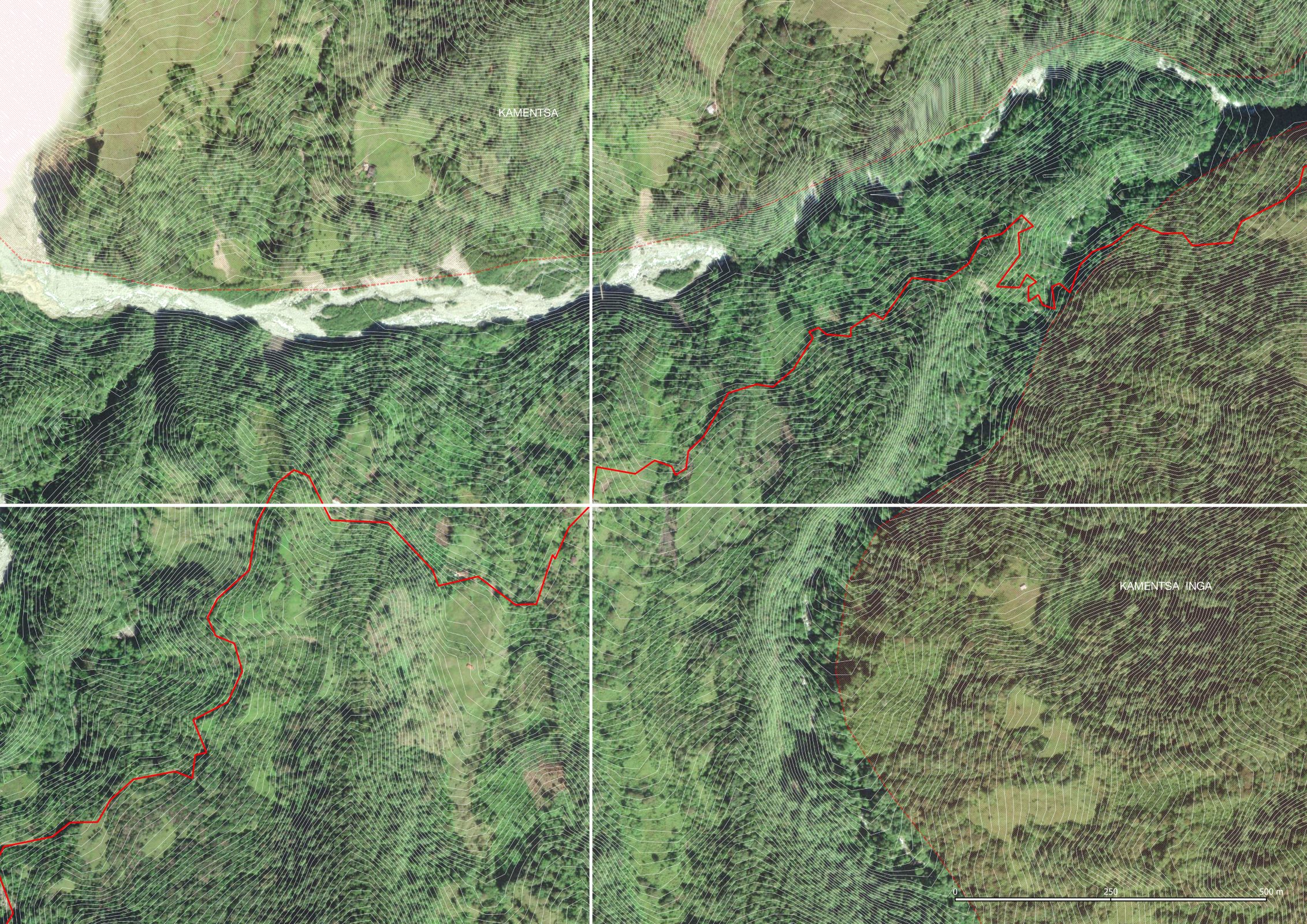
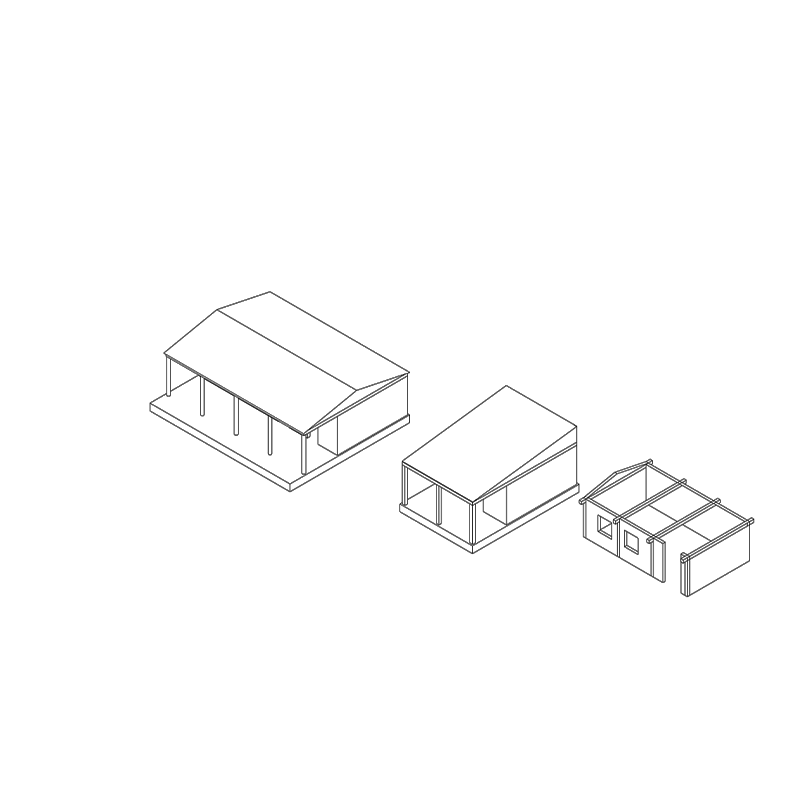

The site is situated at the border of two inga territories, one shared with the camsa community. It's o n top of a slope with a view on the territories. There lies a school for the village near by, partly abandonned.

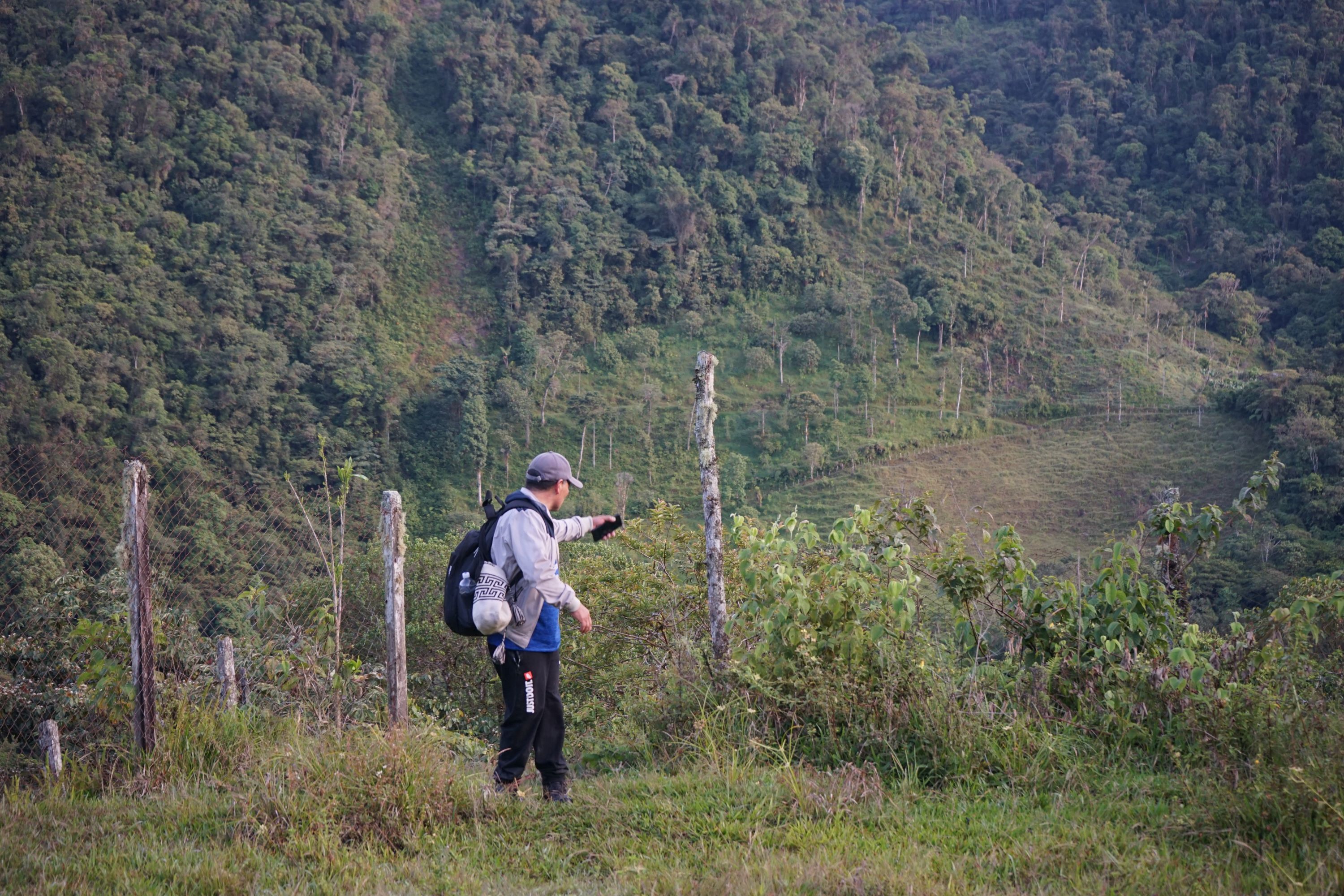
View from the high point to the Resguardo on the other side of Rio Mocoa.
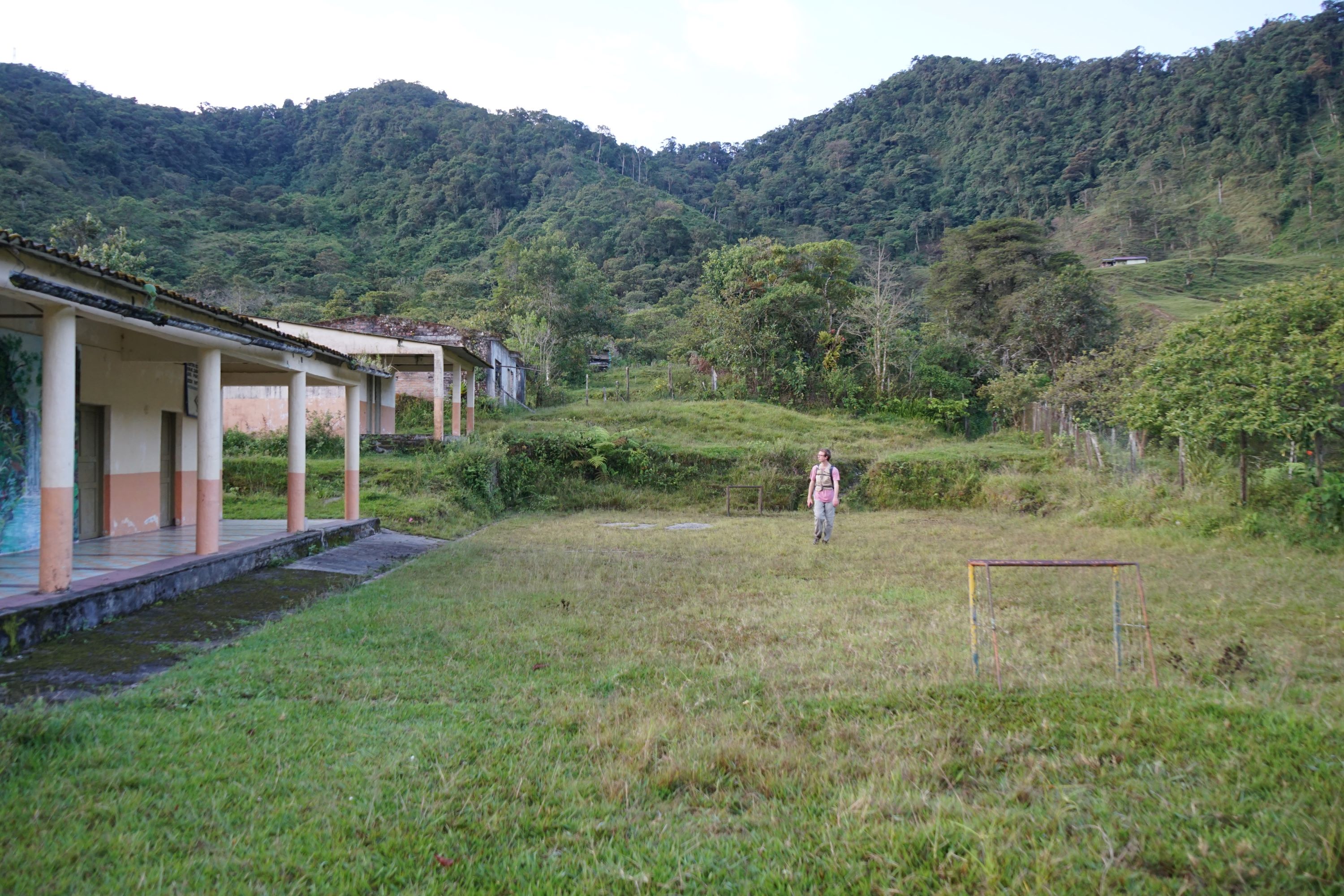
The excisting school buildings on the plateau.
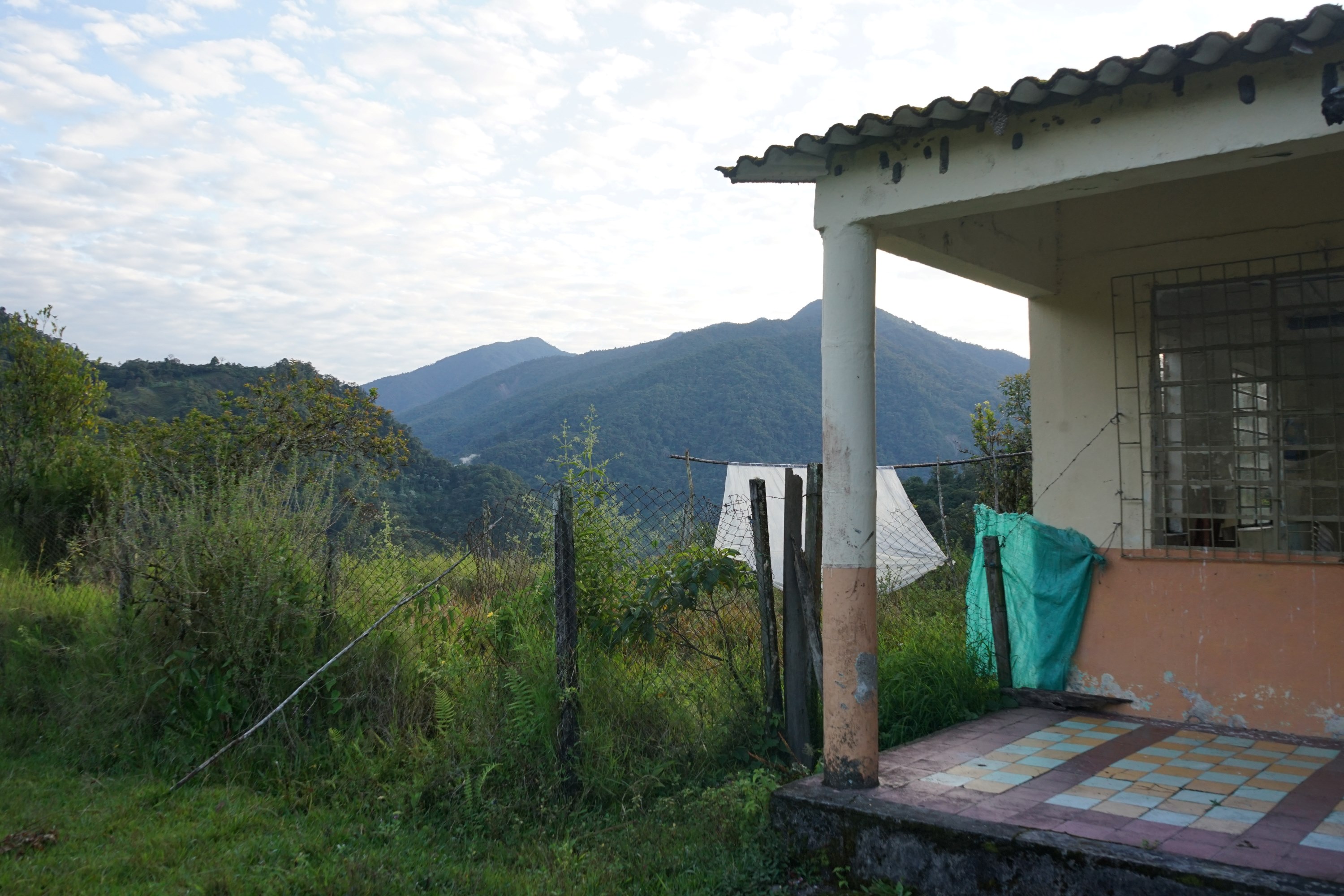
View over the deep valley of the Rio Mocoa.
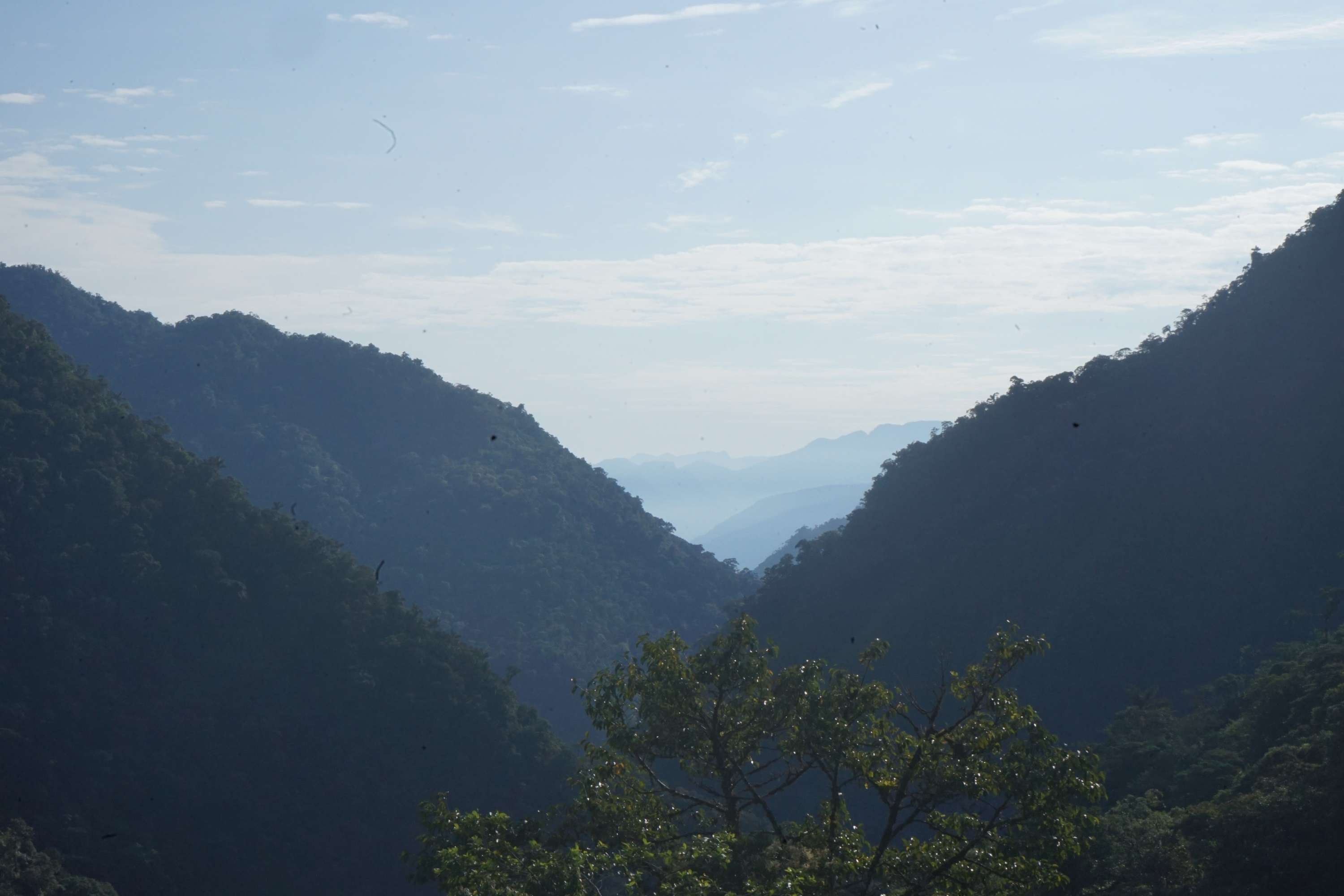
View over the deep valley of the Rio Mocoa.
Planting steps
The process of construction is made step by step, for a growing tampu. Some materials are planted at the begining, like the Wasi Panga used for the traditional leave roofs. This palm s takes around 5 years to grown, which gives the time fram between step 1 and step2.
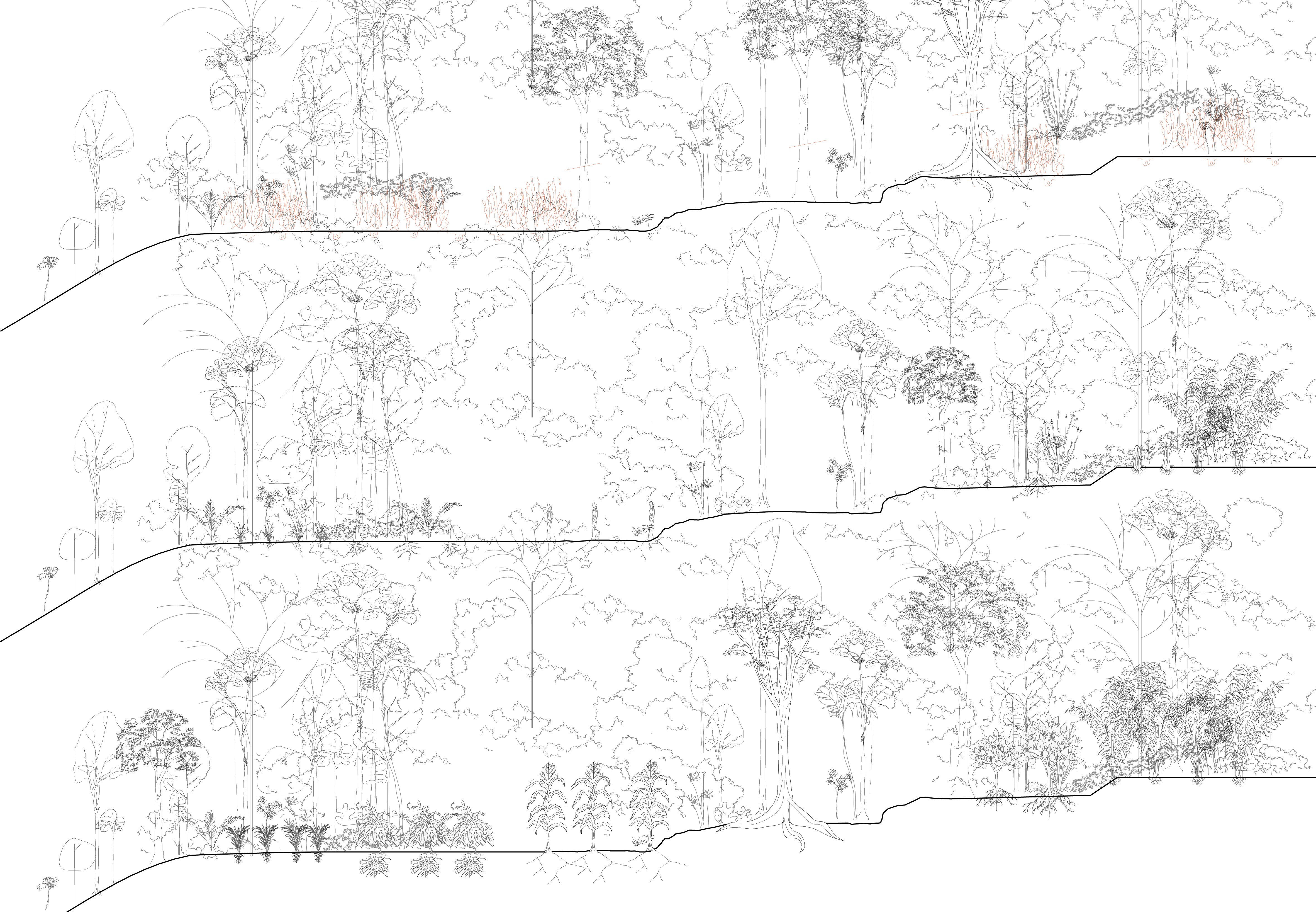
Step 1 - Repare the roofs
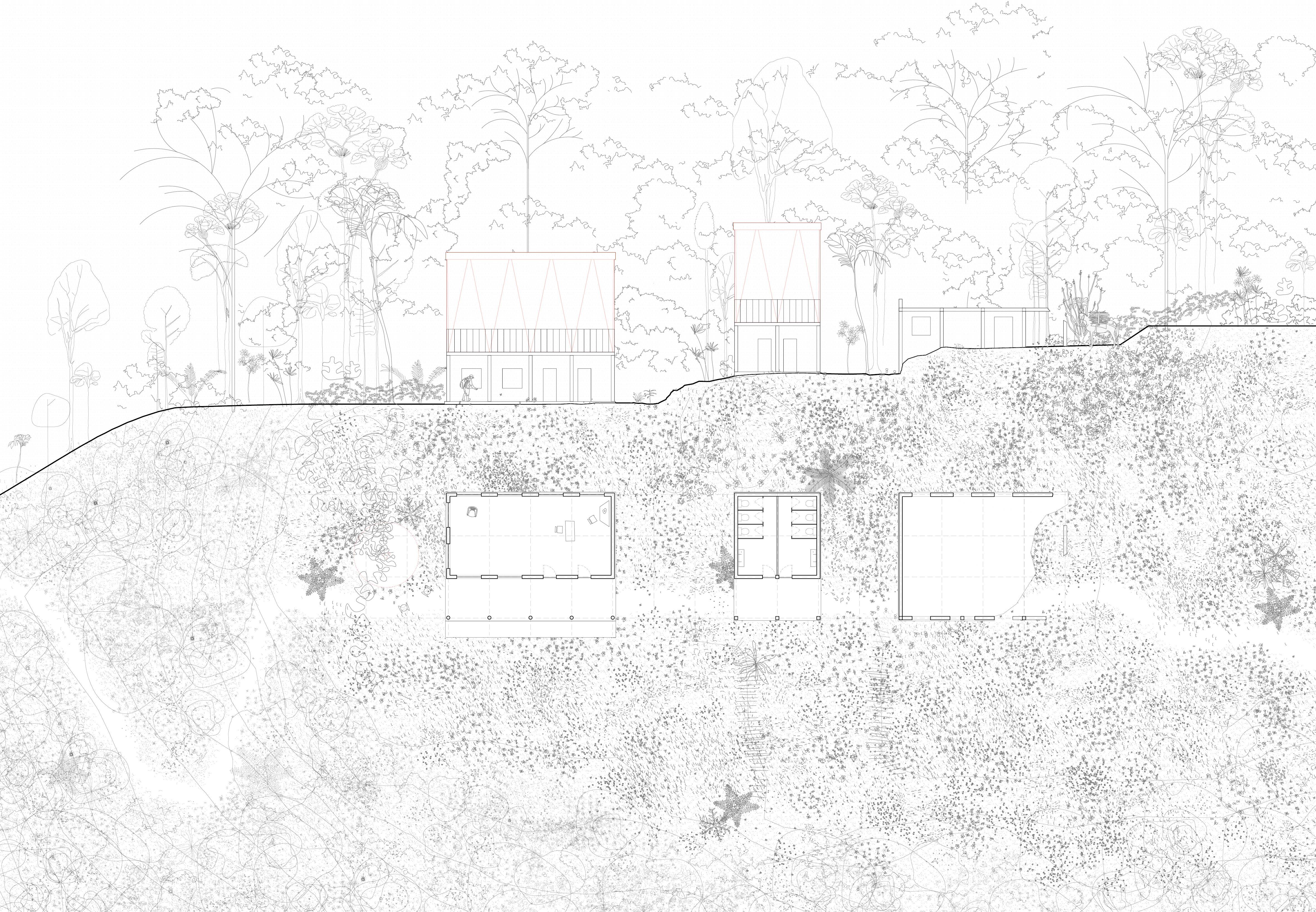
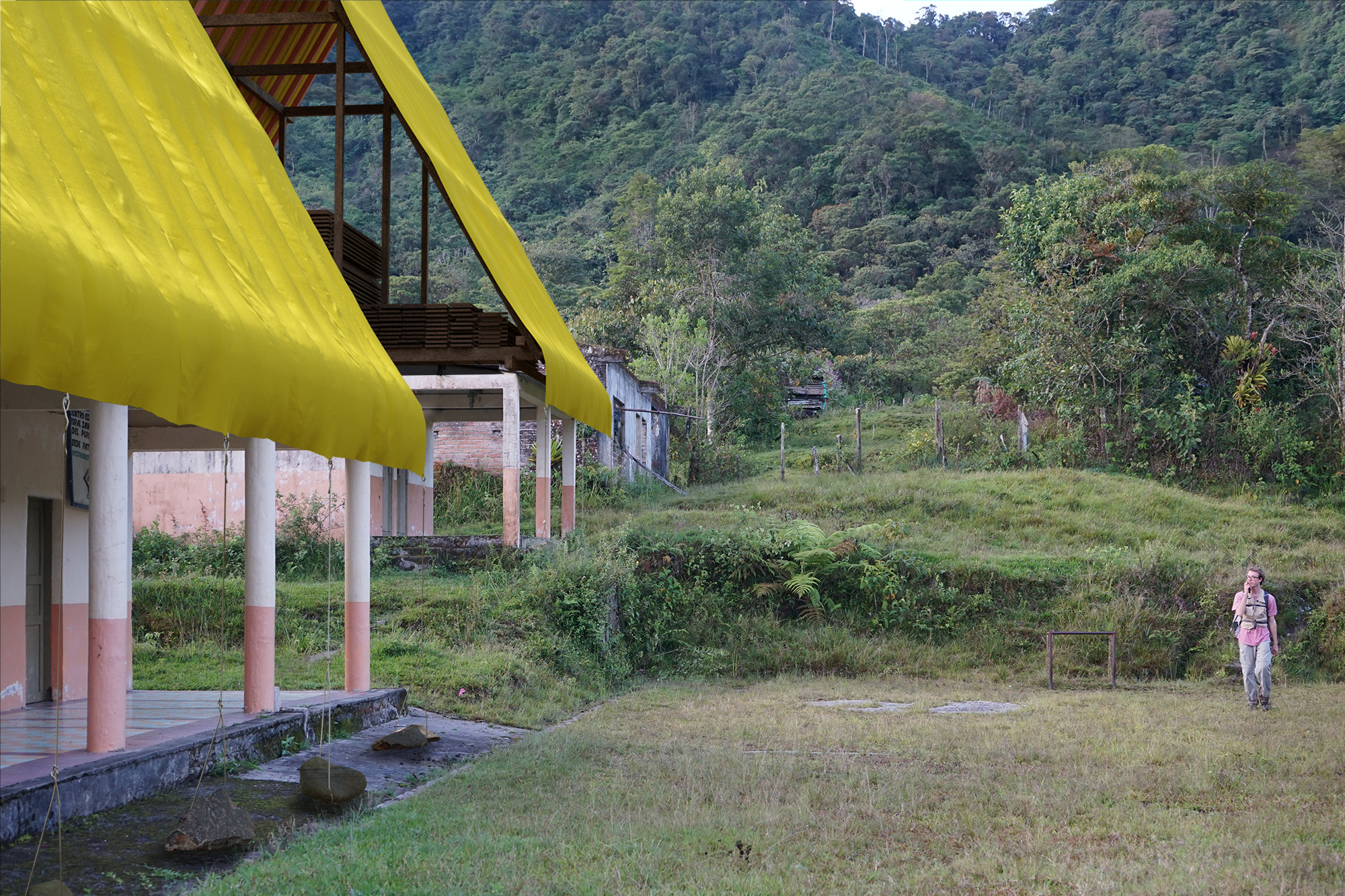
The new building in the back and the school with temporary roof in the front
Step 2 - First wasi panga roof
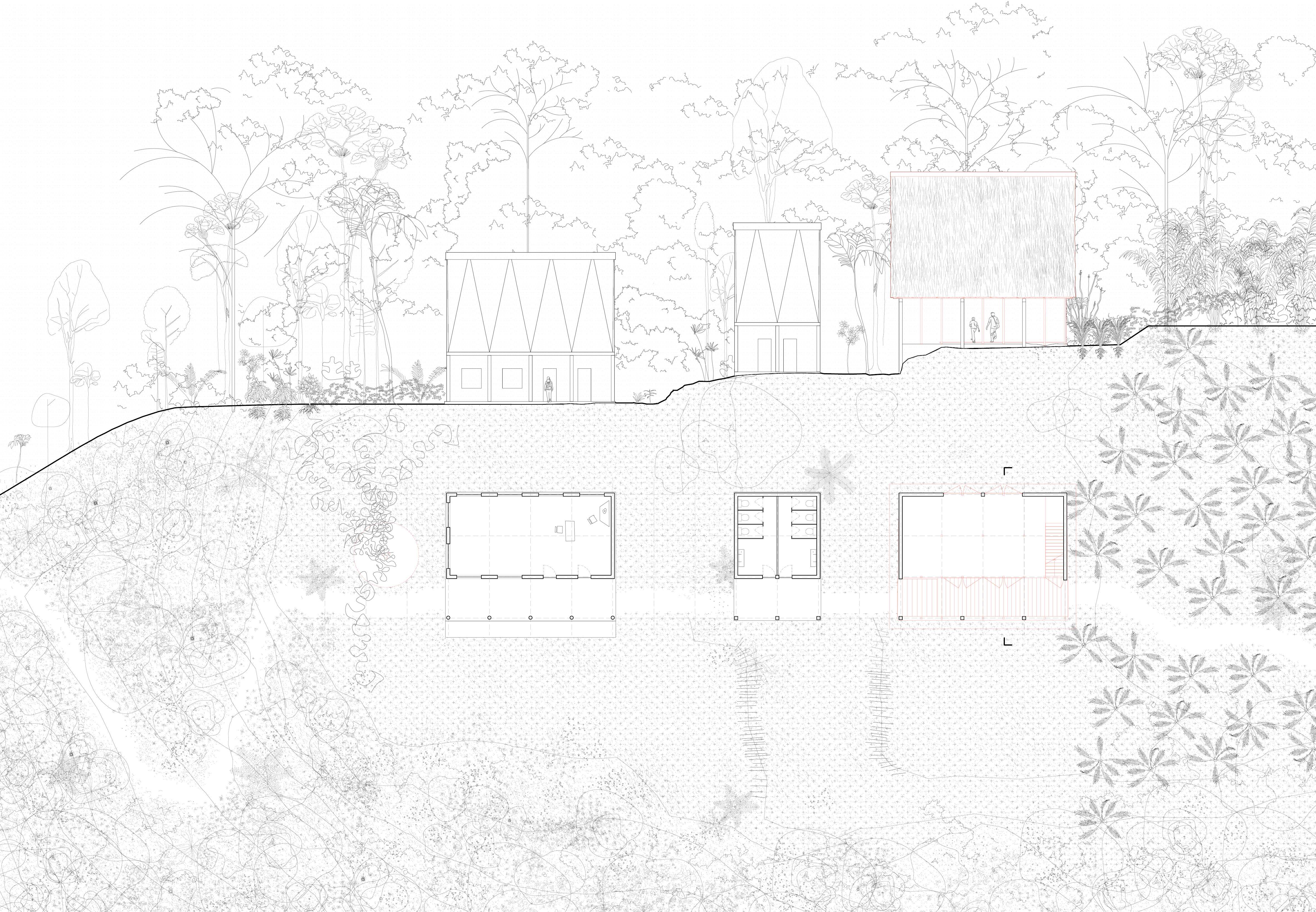
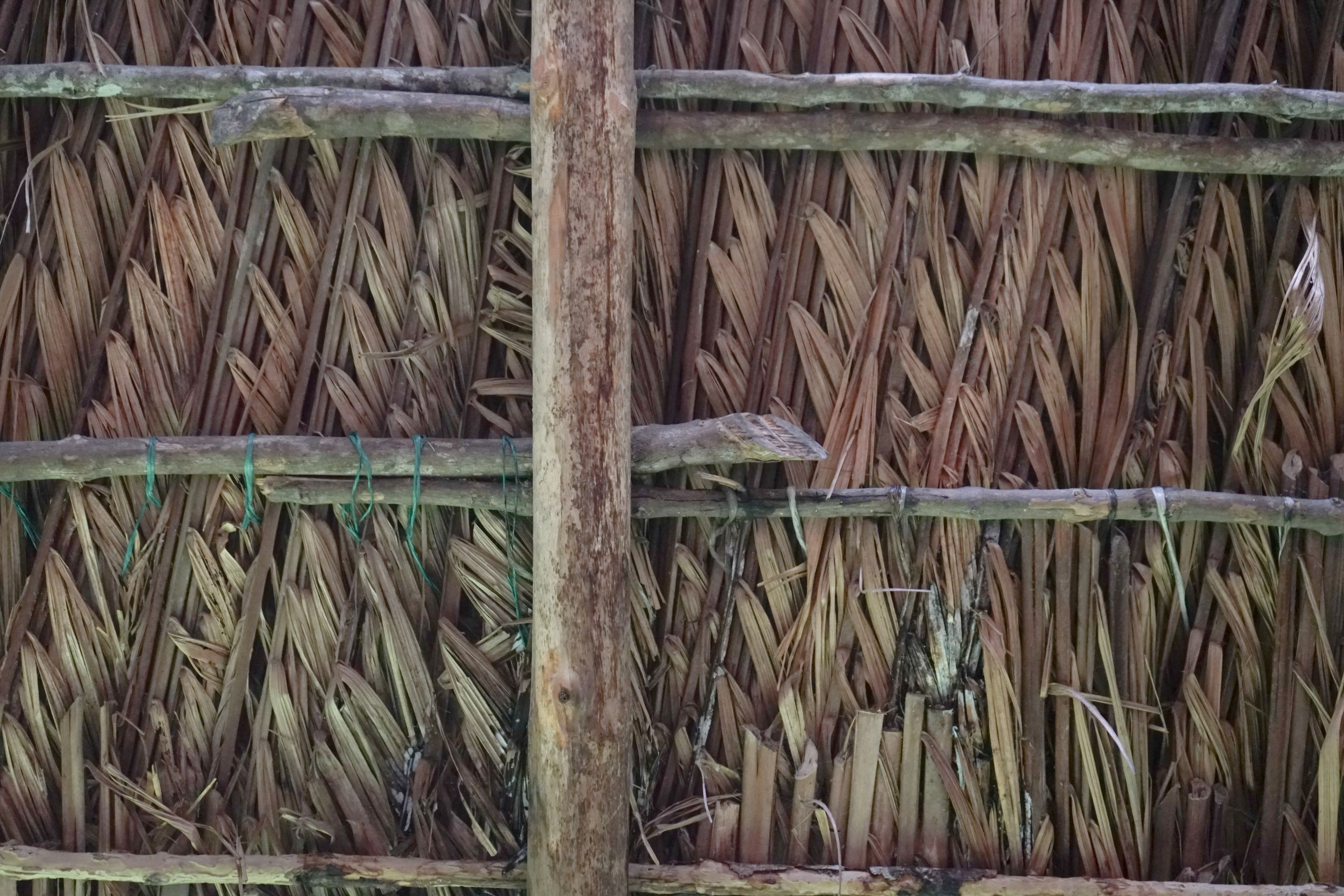
Detail vie of a wasi panga roof.
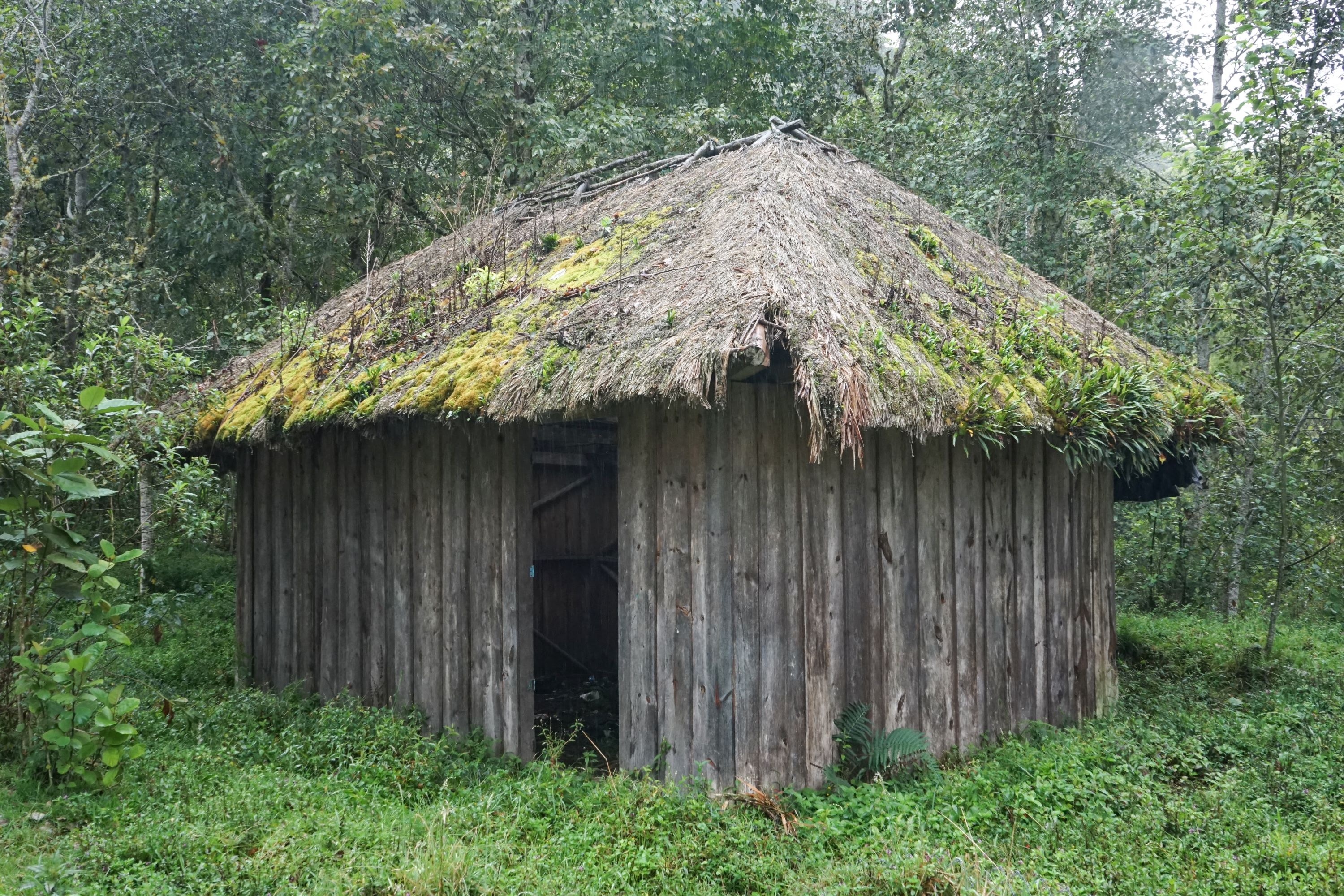
A abandoned Tambu in Valle Sibundoy. The wasi panga roof needs maintanence and lasts around 30 years.
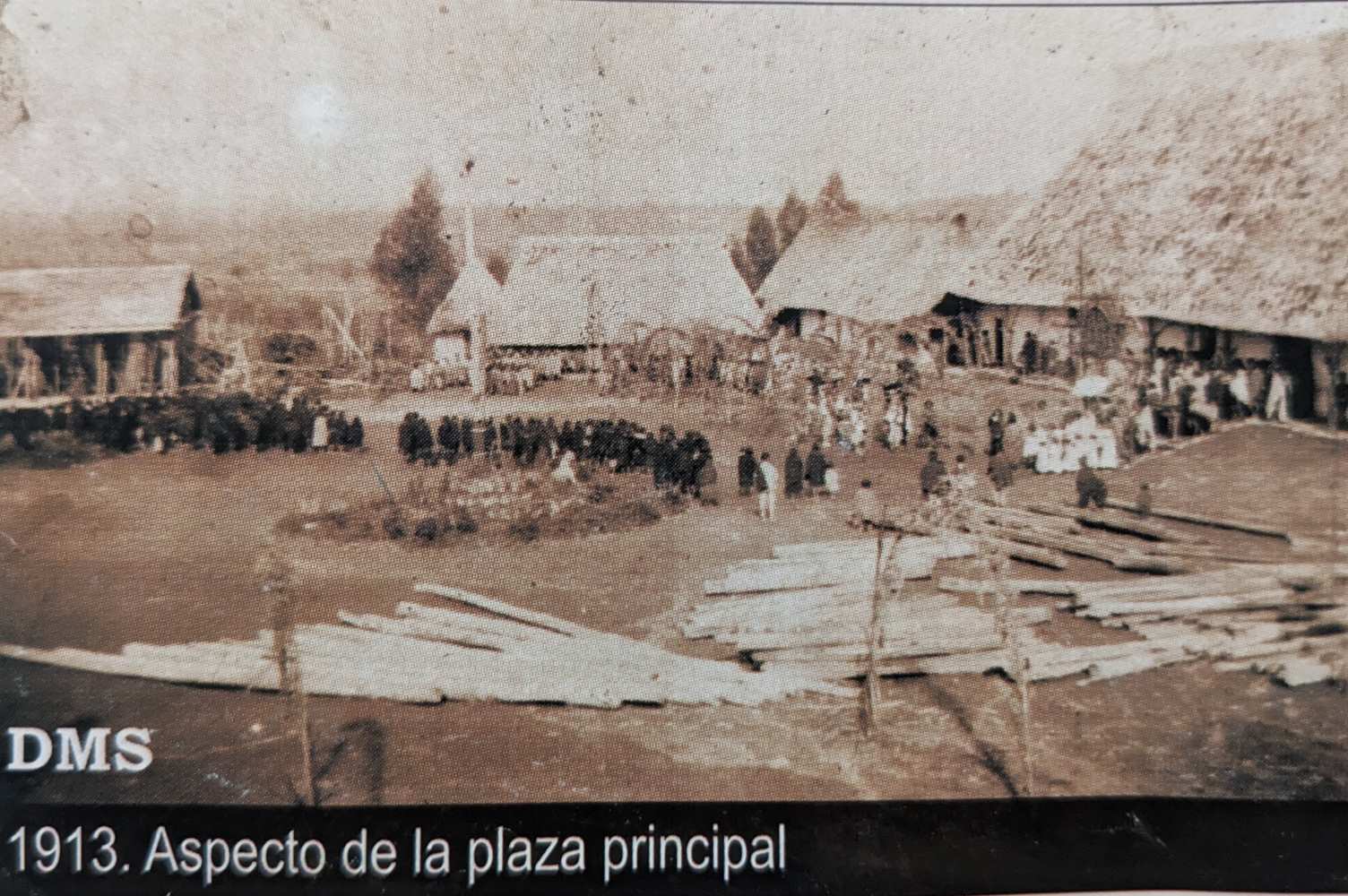
An image from the Diocesis Mocoa Sibundoy. The pictures shows the main plaza of the village Sibundoy in 1913. The houses express themsleves strongly through the roof form.
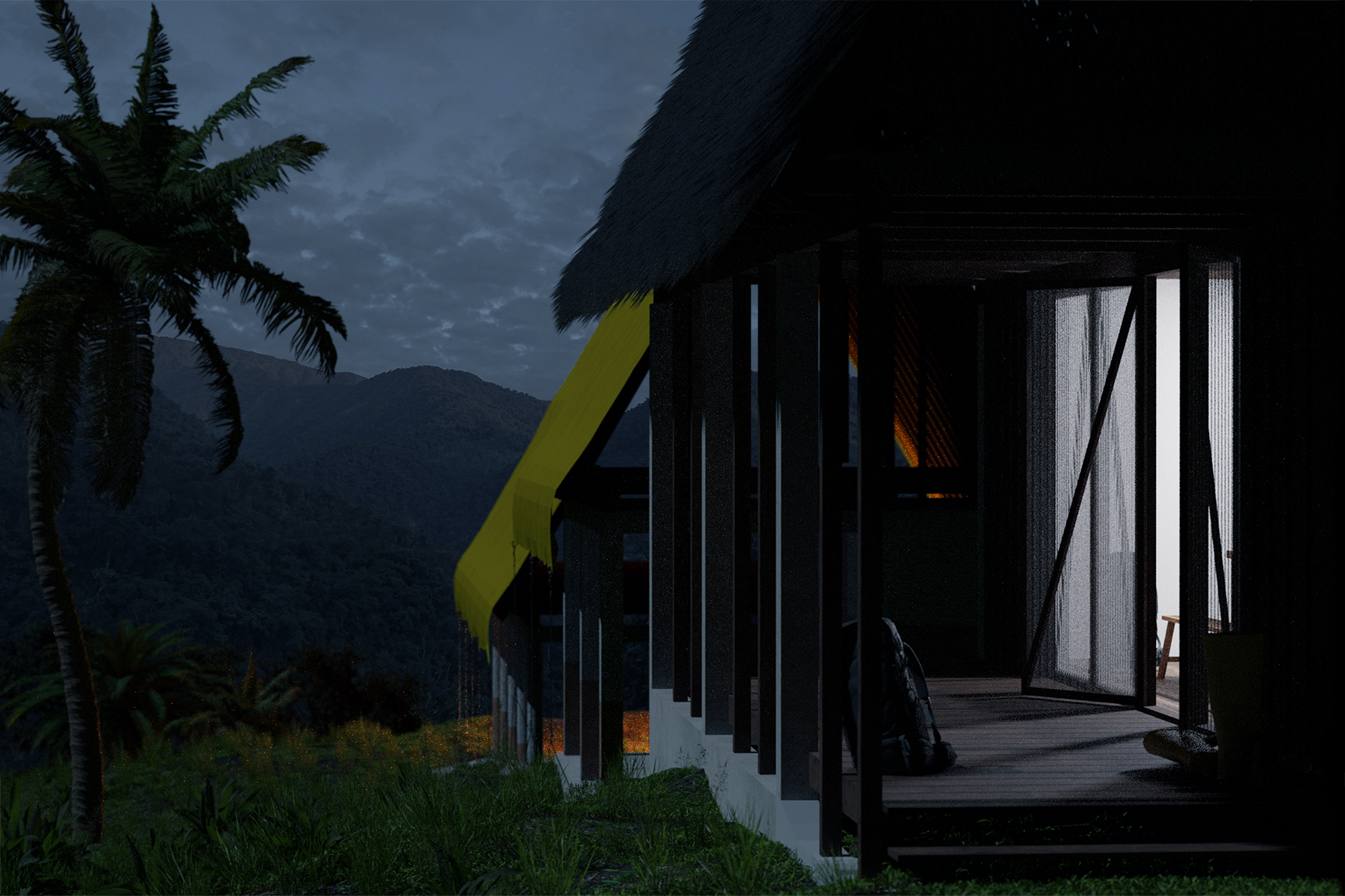
The new build parts add on the excisting to limit the amount of materials which have to be transported
Step 3 - Under one big wasi panga roof
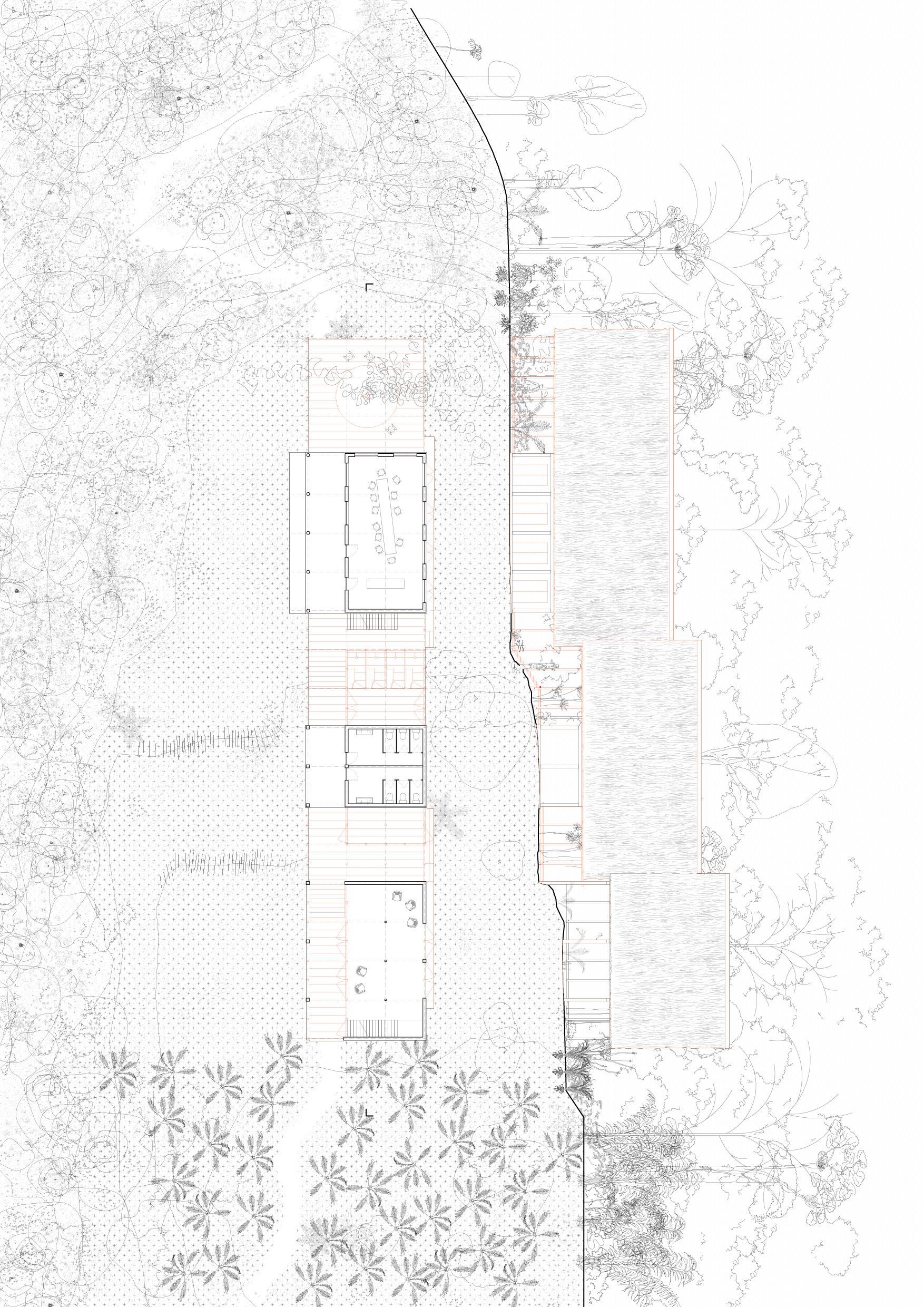
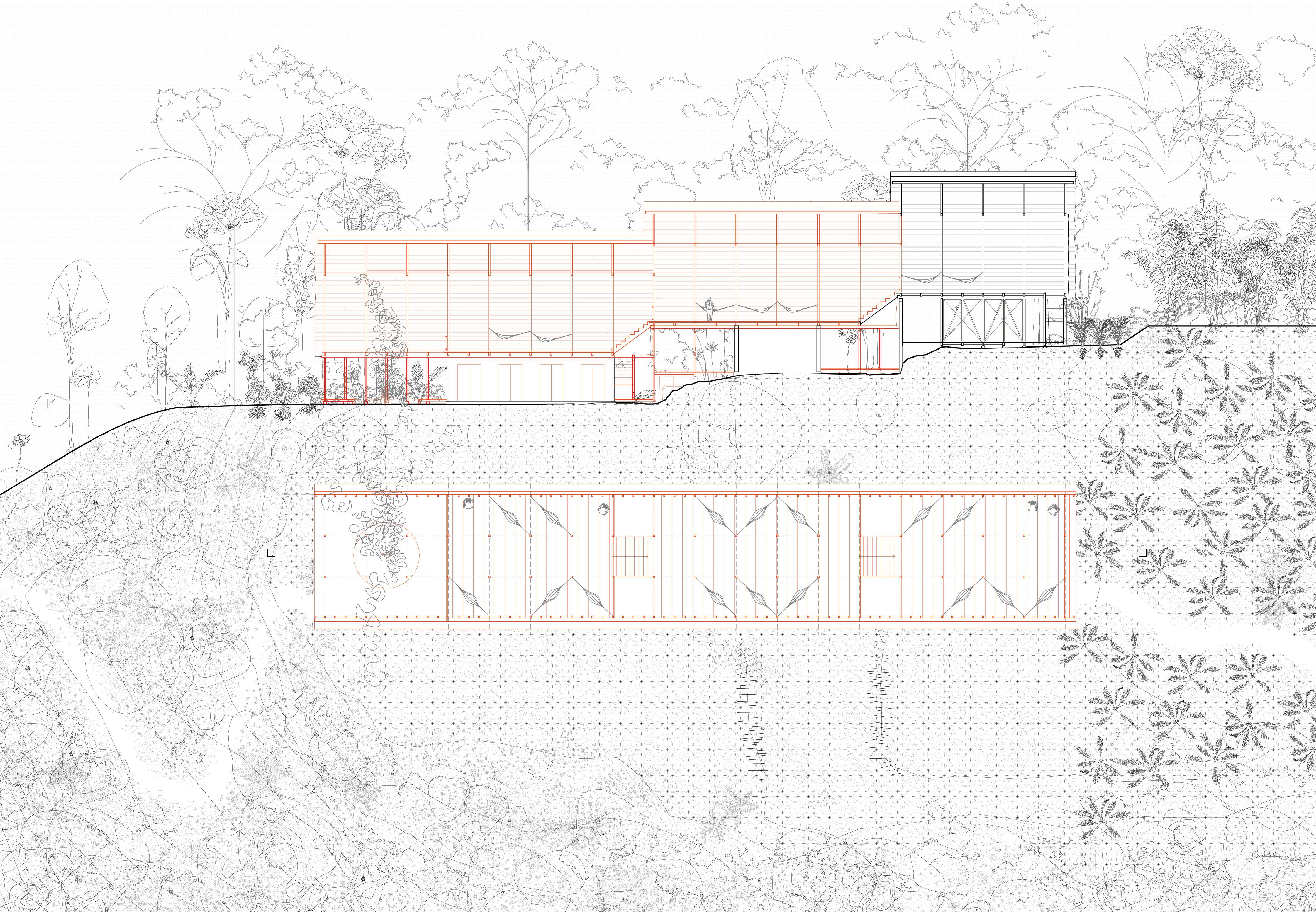
Longitudinal section and floor plan
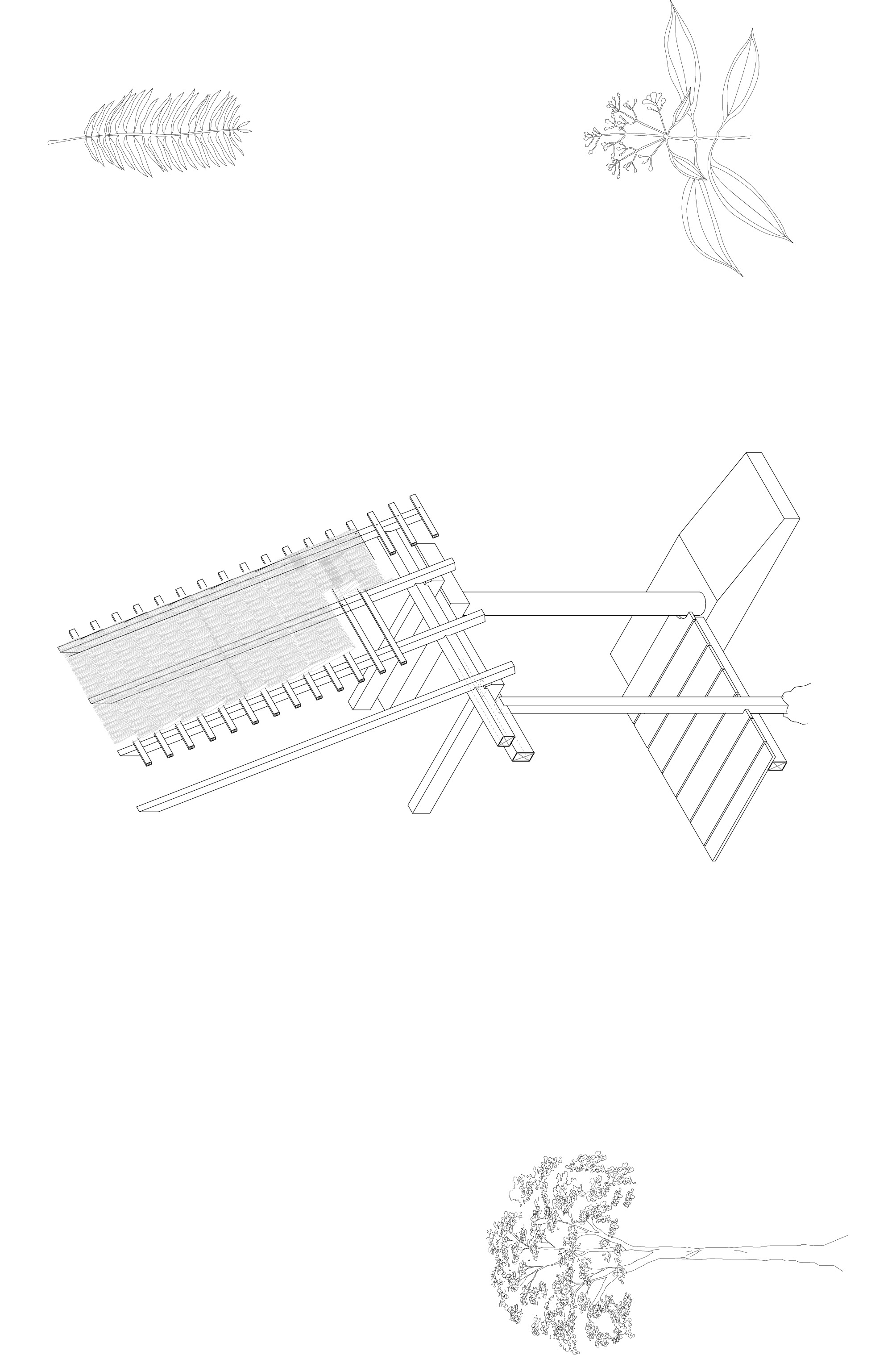
Axonometry of the structure and constrcution methods
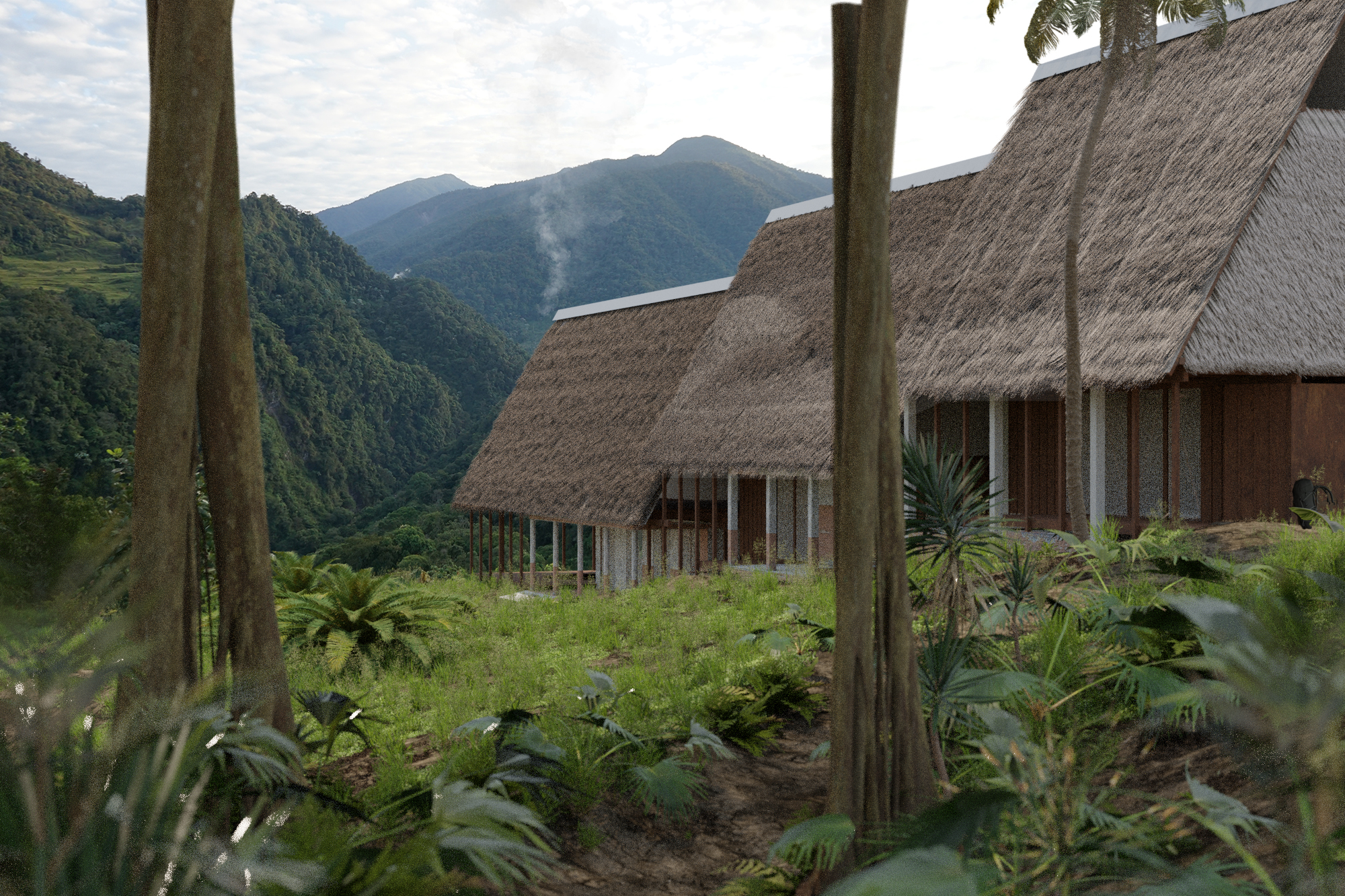
The big roof referrs to the building culture in the region, it follows the landscape.